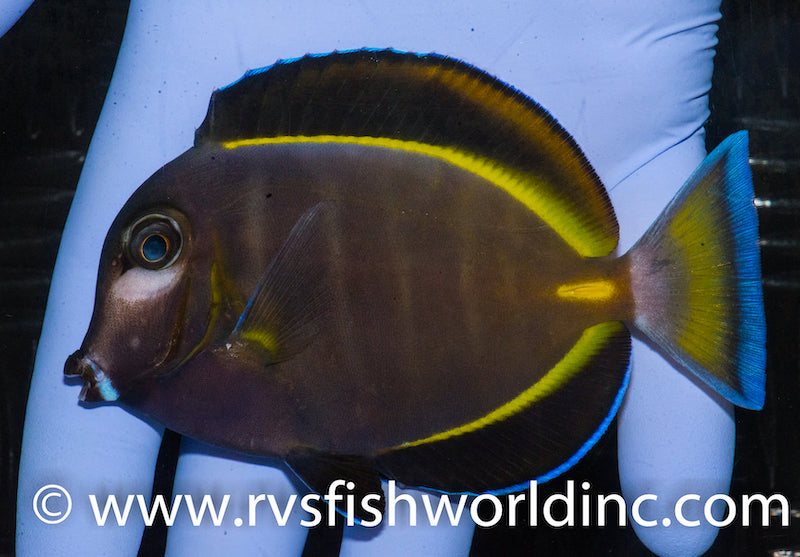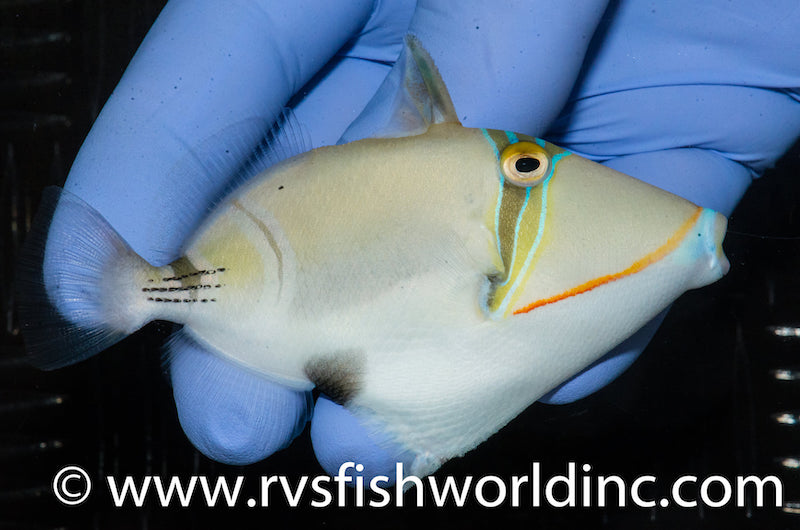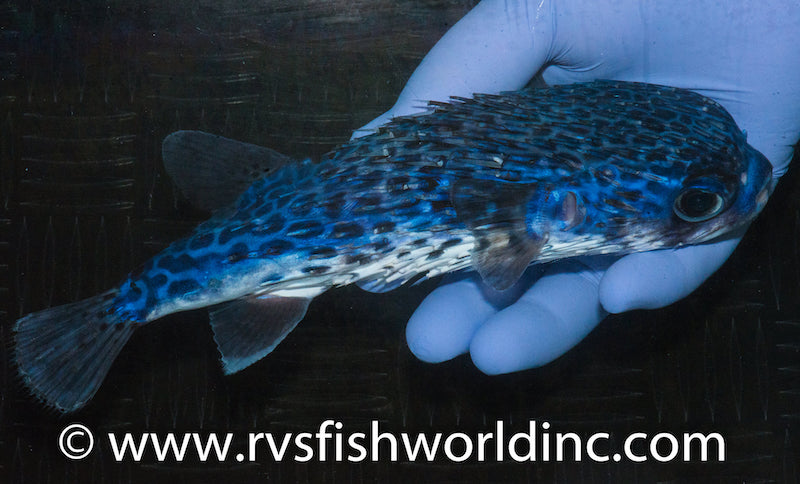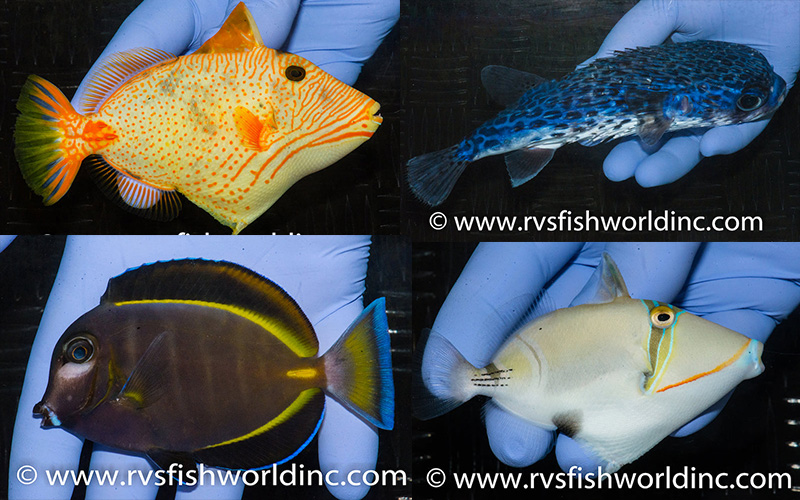Normally when we share exciting fish from RVS Fishworld we’re content to feature one specimen at a time but this week we have four unique specimens to tell you about. Three of these are fish we have featured before but the hybrid powder brown tang is a new one for us.
You’d be forgiven for not knowing that there are actually two species of ‘powder brown surgeonfish, Acanthurus japonicus and A. nigricans. Acanthurus japonicus is generally considered to be the real powder brown tang with a lighter body color overall, a larger patch of white in the face, and noticeable red markings in the dorsal fins.

The darker species Acanthurus nigricans is called the goldrim tang and it is darker overall with very pronounced yellow outline to the body. It’s hard enough to tell apart these two sister species when they are small but the hybrid that RVS just shared with us is an unusual blend of its parents, and will have a subtle but very pronounced appearance to the real surgeonfish aficionados.

The hybrid triggerfish is one we’ve seen before and it features a very recognizable pattern of a reduced spot of the Rhinecanthus verrucosus and two small stripes across the tail that are more reminiscent of the common Picasso triggerfish, Rhinecanthus aculeatus. We don’t see these hybrid picasso triggerfish that often but they are usually small when they do turn up, so we’re still waiting to see one of these hybrid triggerfish all grown up.
The blue porcupine pufferfish is also a species we’ve encountered in the past and its elongated shape is due to its more pelagic, open water swimming lifestyle as its common name of Pelagic pufferfish describes. These are purely for the fish-only aquarium as they grow large, need to eat a lot of food to maintain their rotund figure which will max out at around at around one foot long.

Of these four awesome fish the real prize is the newest specimen of a golden xanthic undulated triggerfish. As with xanthic specimens of Balistapus undulatus that we’ve documented before, this specimen has the same spotted pattern we come to expect in these very striking fish.
The consistently spotted pattern of xanthic undulated triggerfish means there has to be some genetic component to their xanthic coloration but unfortunately once in captivity these fish develop the dark green base coloration of normal specimens. We have to wonder if there’s a way to preserves their brilliant golden coloration when they are freshly collected, perhaps by refraining from exposing them to bright lights and any hint of ultraviolet spectrum.




